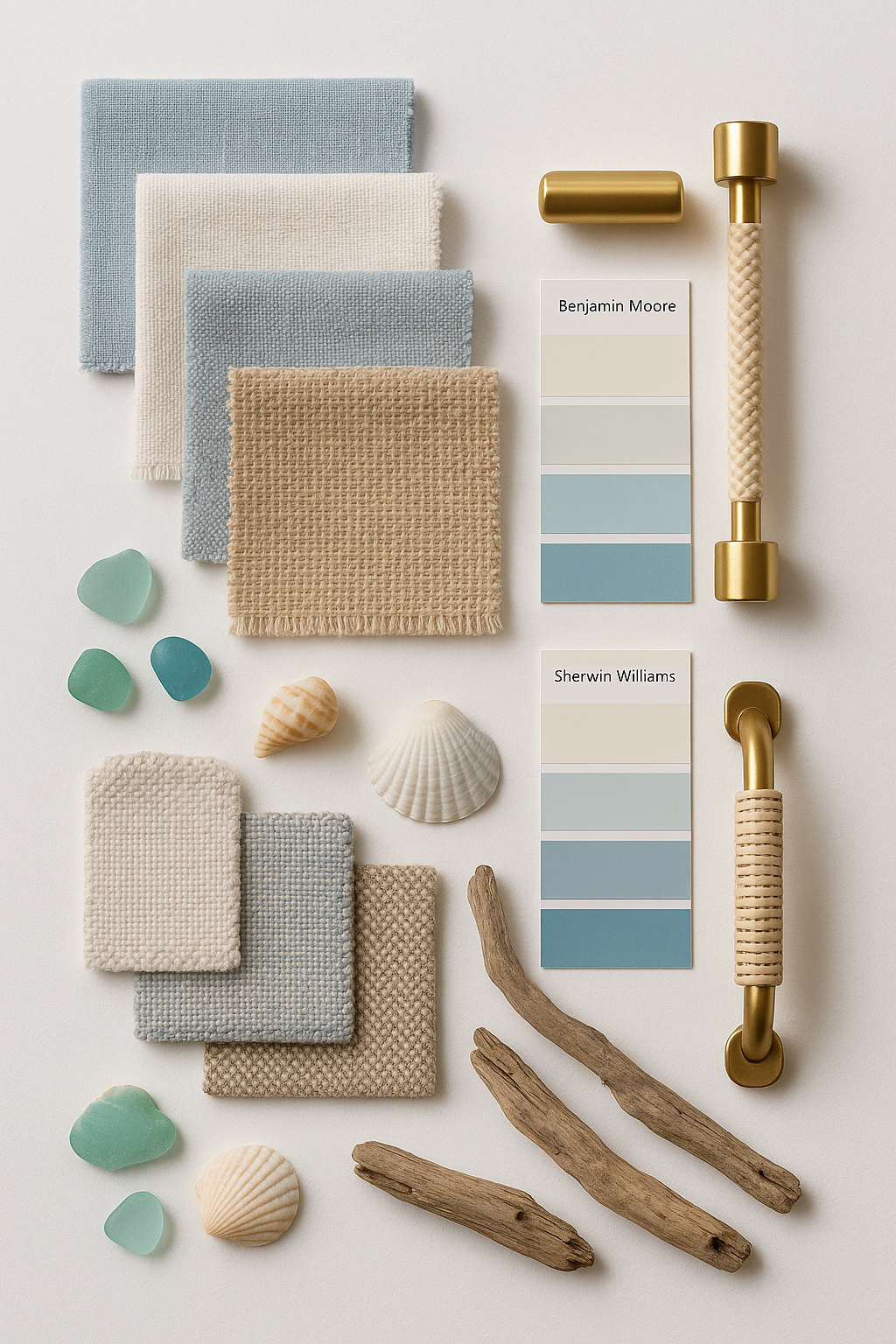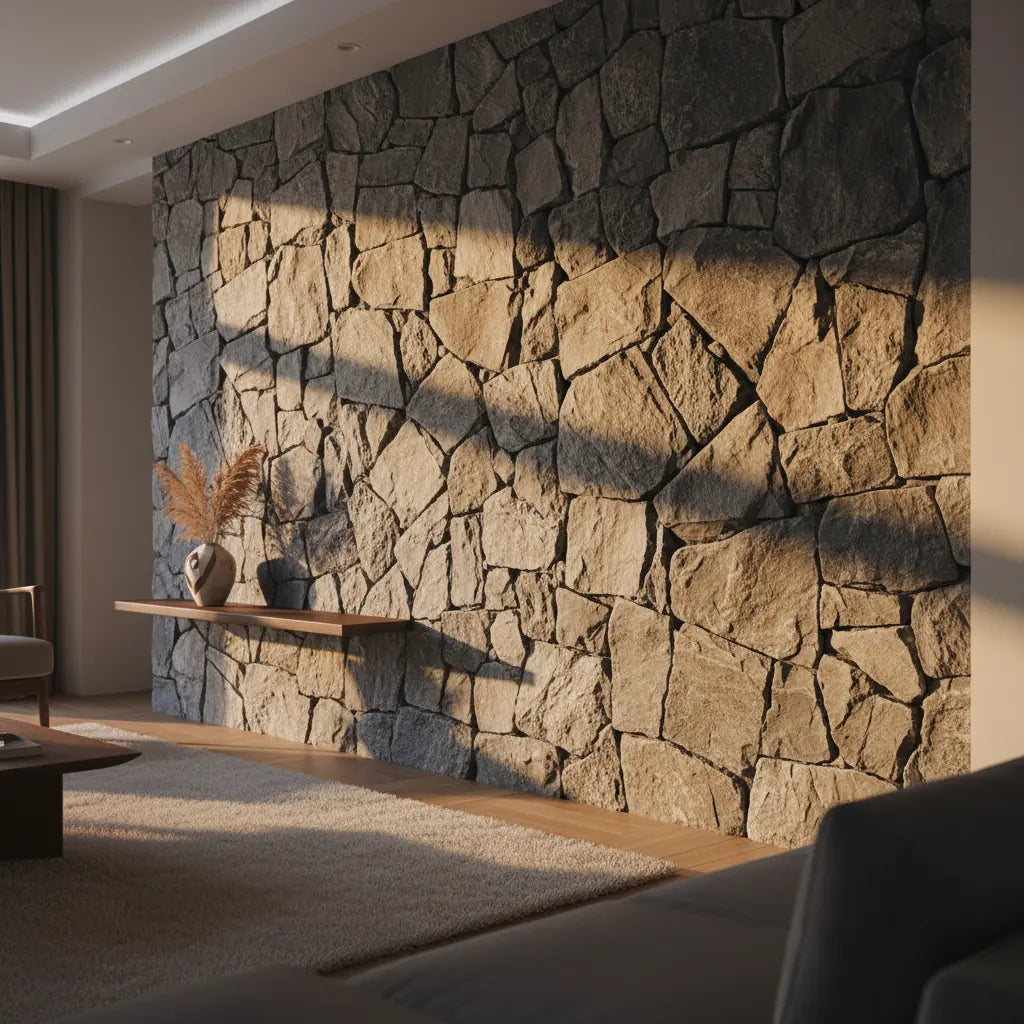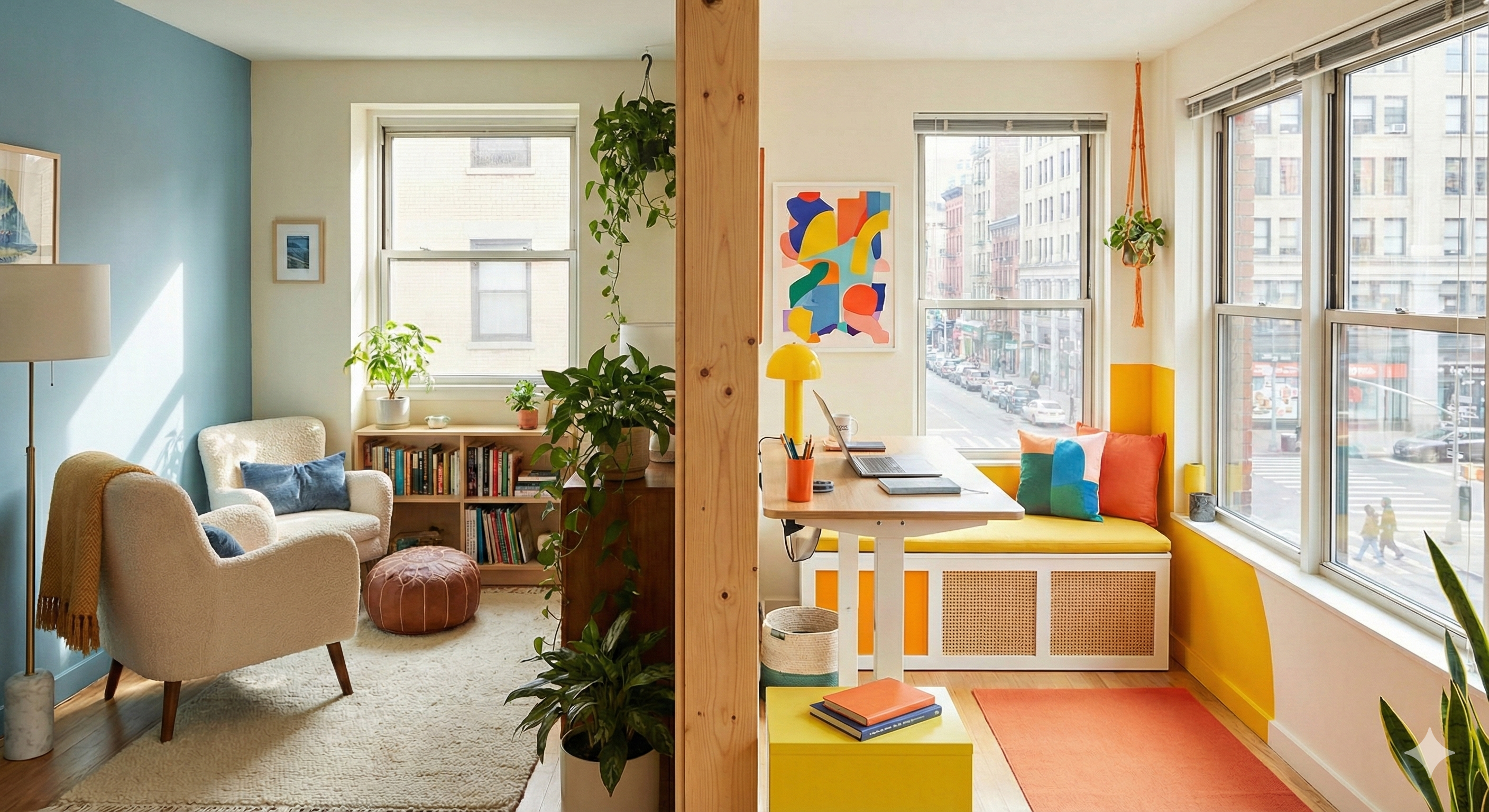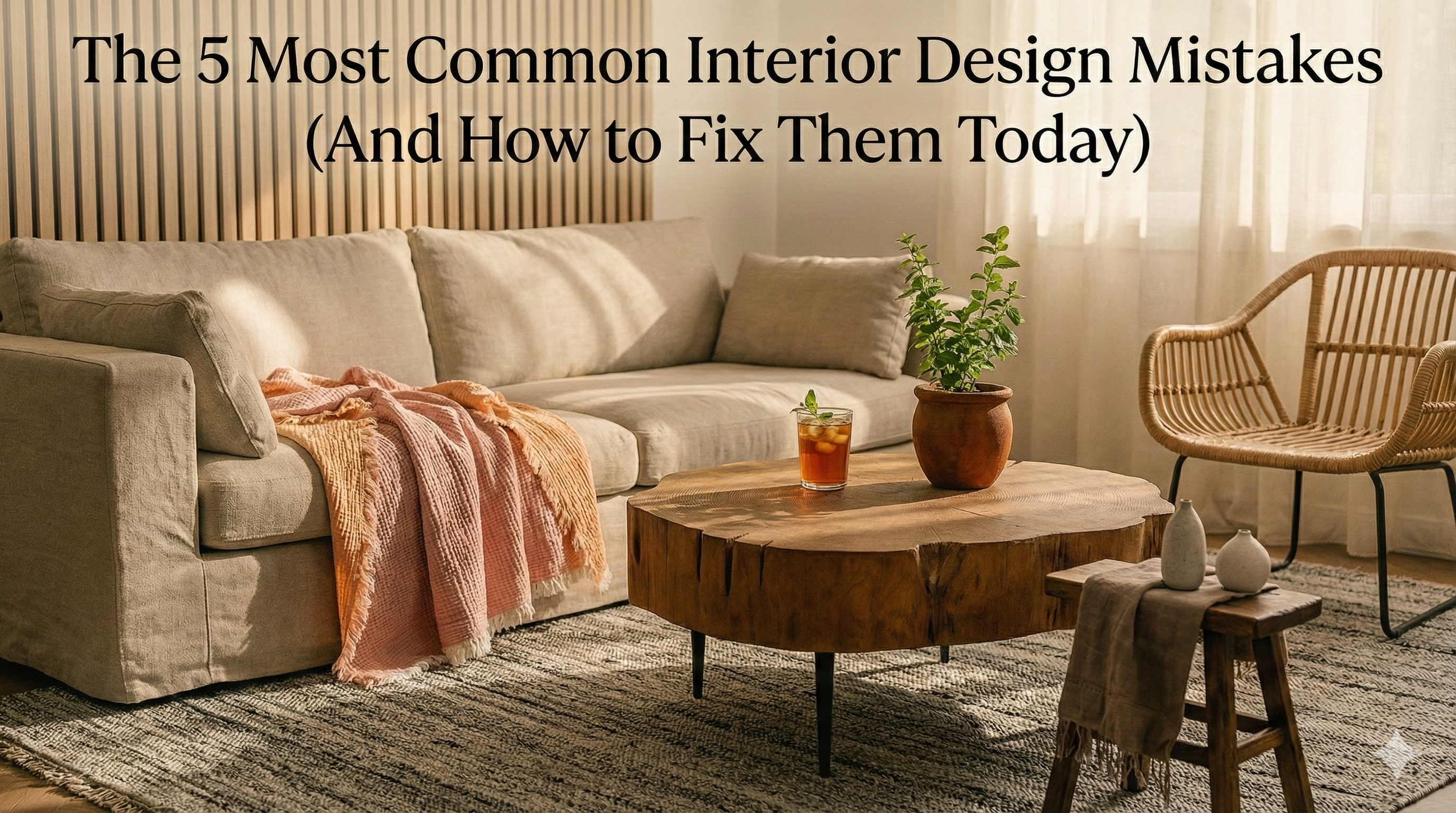You can transform your home space into a coastal retreat that has a peaceful atmosphere through basic coastal design elements.
What is Coastal Style?

Coastal style requires more than decorating with seashells and anchors to achieve its full effect. Your house needs to establish an environment which duplicates coastal experiences. A coastal space should maintain a peaceful atmosphere with open freedom and natural connection.
The most effective coastal rooms avoid obvious beach house displays. A peaceful atmosphere combined with open spaces and relaxation characterizes these rooms. The room achieves this atmosphere through color and texture selection instead of relying on beach-themed objects.
Different Kinds of Coastal Style
The identification of coastal styles requires knowledge about their various forms.
Coastal vs. Nautical vs. Beachy

The style of Coastal design replicates the actual beach atmosphere. The design incorporates soft color schemes and natural elements of wood or straw to achieve a peaceful and peaceful ambiance.
The Nautical Style emphasizes maritime vessels above all else. The color palette consists of dark blue along with bright white and red. The decor features eye-catching stripes together with anchors and ship wheels.
The Beachy Style presents a friendly and relaxed atmosphere to its users. The color scheme includes turquoise alongside other vibrant shades together with surfboard accessories.
Modern coastal homes display minimal beach-inspired decorative elements. The beach atmosphere emerges through color combinations and textured elements in this design approach.
The Main Ideas for a Good Design
1. Balance and Harmony: Feeling Calm
A few essential concepts create the sense of calmness in rooms. The concepts assist in creating a proper room balance.
To achieve balance in a room you need to distribute its elements for creating an even distribution. For example:
- The bed occupies the central position with matching tables and lamps positioned on both sides.
- A big table should occupy one side of the room while a smaller table with a tall lamp should be placed on the opposite side.
The concept of Harmony requires all room elements to work together harmoniously.
- Choose natural colors that appear in the environment to maintain consistency.
- You should use wicker or wood materials across multiple locations in the space.
2. Rhythm and Repetition: A Nice Flow
Your eyes experience a smooth flow through the room because of rhythm. Rhythm can be achieved by using identical elements throughout different areas of the room.
- The eye travels through the space when it moves from a straw rug to a wicker chair to a woven light.
- The same pattern which appears on a pillow should also appear on a bench.
- The same light green color should appear on a lamp as well as a pillow and a painting.

3. Emphasis and Contrast: Making it Interesting
A room with uniform elements becomes uninteresting. Contrast adds interest.
The concept of emphasis requires selecting one element to be the central point. This could be:
- The bed stands out with its unique woven headboard design.
- The special wall features wood planks or wallpaper.
- The bed area should feature a dominant large art piece.
When you combine elements that differ from each other you achieve contrast.
- The combination of a tough straw rug with delicate cotton blankets creates a good contrast.
- The combination of dark blue pillows with soft white sofa works well together.
- The combination of reflective vases with matte wall finishes produces a visually appealing effect.

The Colors of the Coast
The coastal aesthetic draws its color palette from beach environments.
Main Colors
White paint used for walls should be either soft or bright because it produces a bright atmosphere in the room.
A room acquires a grounded quality when you use beige alongside cream and tan colors.
Other Colors
The ocean-inspired color palette includes light sky blue along with soft green and dark navy blue.
Shell pink and orange and sunny yellow should be used as small decorative elements to enhance the natural color scheme.
Styles Around the World

A coastal American space features light-toned furniture combined with natural materials while maintaining a relaxed atmosphere.
The Mediterranean Coastal style features white walls together with terracotta and bright blue colors which are reminiscent of the reddish-brown tone.
Tropical Coastal interior design utilizes dark teak wood alongside bold and bright colors that include turquoise and coral.
Furniture for Your Coastal Room
The Bedroom
The Bed is the Star
- Choose beds with woven headboards or light wood.
- Select beds which have white or soft-colored paint finishes.
Featured Products:
- Scalloped Rug: Link to Scalloped Rug
- Rattan Side Table: Link to Rattan Side Table

Other Furniture
- Select nightstands and dressers which have basic yet elegant designs.
- Wicker chairs along with baskets will introduce more textural elements to the space.
- You should place a comfortable chair or bench inside the room if there is enough space available.
Rattan storage boxes can add a natural touch to your bedroom decor.

Size Rules
- A minimum of 3 feet of clearance should exist for walking around your main furniture pieces.
- The height of your nightstands should match the height of your mattress.
- A bench placed at the foot of the bed needs to be slightly narrower than the width of the bed.
How to Style Your Bed
Adding multiple layers to your bed will create a cozy appearance and feel.
The following five easy-to-implement layers will enhance your bed appearance.
- The initial step involves selecting white or blue cotton or linen sheets.
- Choose a thin blanket with an interesting texture or a basic pattern to complete your ensemble.
- Place a folded fluffy duvet or comforter at the foot of the bed.
- Place your sleeping pillows beneath multiple decorative pillows which serve as the front layer.
- The bed should conclude with a soft throw blanket placed in its corner.

Best Materials
Linen serves as an excellent coastal material choice because it maintains a light relaxed appearance.
Cotton represents a timeless choice because it provides a crisp texture with simple washing capabilities.
Bamboo together with Silk offer modern and soft materials which provide cooling effects.
Using Light in Your Room
Use Natural Light
The sun brings the essential element of coastal style design. Window coverings should allow plenty of natural illumination to enter the room. [6]

Add Different Kinds of Light
Main Light:
A main light hangs from the center of the ceiling. Try one made of rattan, rope, or shells.

Rattan wall sconces can provide ambient lighting.
The bedroom requires reading lights which can be installed as nightstand lamps or wall-mounted fixtures.
A few tiny lights can be used to create mood effects by creating a warm corner ambiance or drawing attention to artwork.
Pro Tip: Put dimmers on your lights so you can change how bright they are.
The Right Window Coverings
Select window coverings that establish connections between outdoor and indoor areas.
Good Choices
The use of sheer linen or cotton curtains creates delicate and soft illumination in the room.
Sheer linen curtains are a perfect choice for a coastal look.
The natural texture of woven wood shades emerges from bamboo and grass materials.
The classic white plantation shutters enable excellent control of lighting through their shutters.
The fabric design of Roman shades enables neat folding.
You can combine a blocking shade with decorative sheer curtains for a layered effect.

Adding Decorations
The coastal theme should be subtly expressed instead of being loudly announced. [7]
Minimalist coastal decoration requires no extensive beach-themed objects. Your selection should create subtle coastal impressions instead of direct beach references.
- Art: Paintings featuring ocean scenes together with black-and-white beach photographs or historical cartographic documents work well as artwork choices.
- Use a single decorative piece of coral or driftwood or sea glass in a bowl as a natural addition to your space.
- The simple decorative elements include thin stripes and soft flower patterns for pillows and throws.
- Handmade Items: include pottery along with woven baskets and unique decorative pieces.

Handmade straw wall decorations can add a touch of bohemian charm.
The space benefits from green plants which include palms and ferns when placed in basic planters.
Mistakes to Avoid
1. Too Many Beach Things
Problem: Filling a room with anchors, shells, and fish nets.
Solution: Focus on calm colors and natural textures instead.
2. Forgetting Texture
The decoration depends solely on color choice.
You should combine different texture elements that include rough and smooth and woven and plain.
3. Bad Lighting
A room needs more than a single ceiling light to create a proper ambiance.
Different kinds of lights on dimmers create better moods.
4. Wrong Size Furniture
The rooms contain furniture pieces which either exceed or fall below the suitable dimensions for each space.
Measure the dimensions of your space before selecting furniture to ensure there is sufficient room to move around.
5. Not Enough Contrast
Everything in the space maintains a uniform light color tone.
The space becomes more interesting through the strategic addition of dark objects and multiple wood tone elements.
Your Own Calm Space
A well-designed coastal room develops naturally as a reflection of personal stories. The spaces achieve both aesthetic beauty and create a positive emotional state. [8]
Coastal design exists as an emotional approach rather than following strict rules. You can develop a coastal-inspired room which captures coastal serenity using these design principles regardless of your location.
Your coastal room should be a place where you feel peaceful. The space should appear attractive while simultaneously providing relaxation benefits. [9]


References
- The Decorholic, "Coastal Decor 101: A Step-by-Step Beginner's Guide"
- Lovelle, "Creating a Beach House Style"
- Edward George London, "The Ultimate Guide To Creating A Stunning Coastal Home"
- Nikki’s Plate, "8 Tips to Create a Coastal Interior Design"
- Nikki’s Plate, "8 Tips to Create a Coastal Interior Design"
- Nikki’s Plate, YouTube Video "Seaside! 101 COASTAL Interior Design Ideas 2025"
- Fancy Bloom, "Modern Coastal Interior Design Decorating Guide"
- Homestyler, "Transform Your Living Room into a Coastal Retreat"
- Amatimmobiliaris, "Ideas for Decorating Your Beach House"
- Jane At Home, "Modern Coastal Decor"






